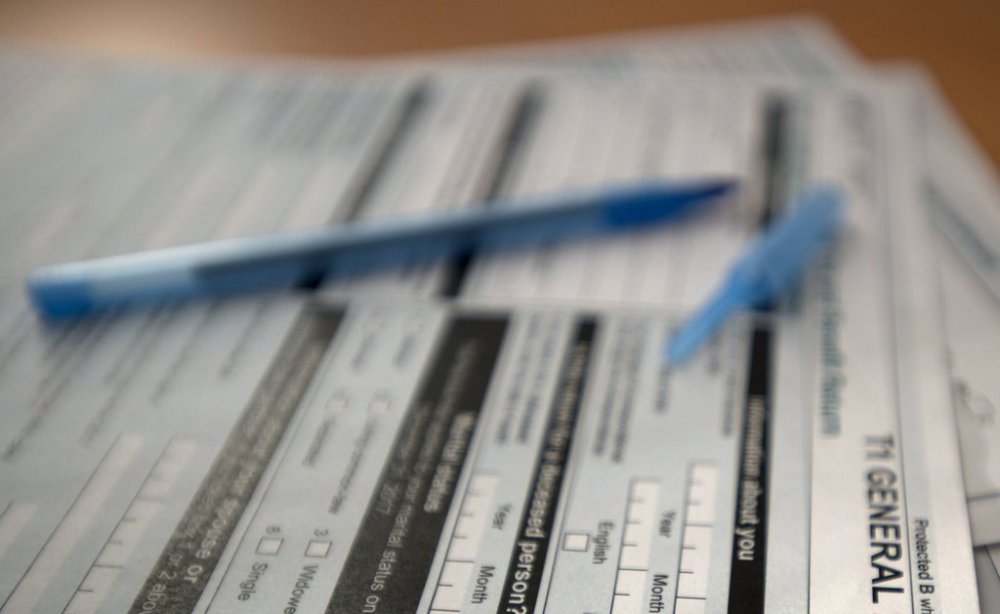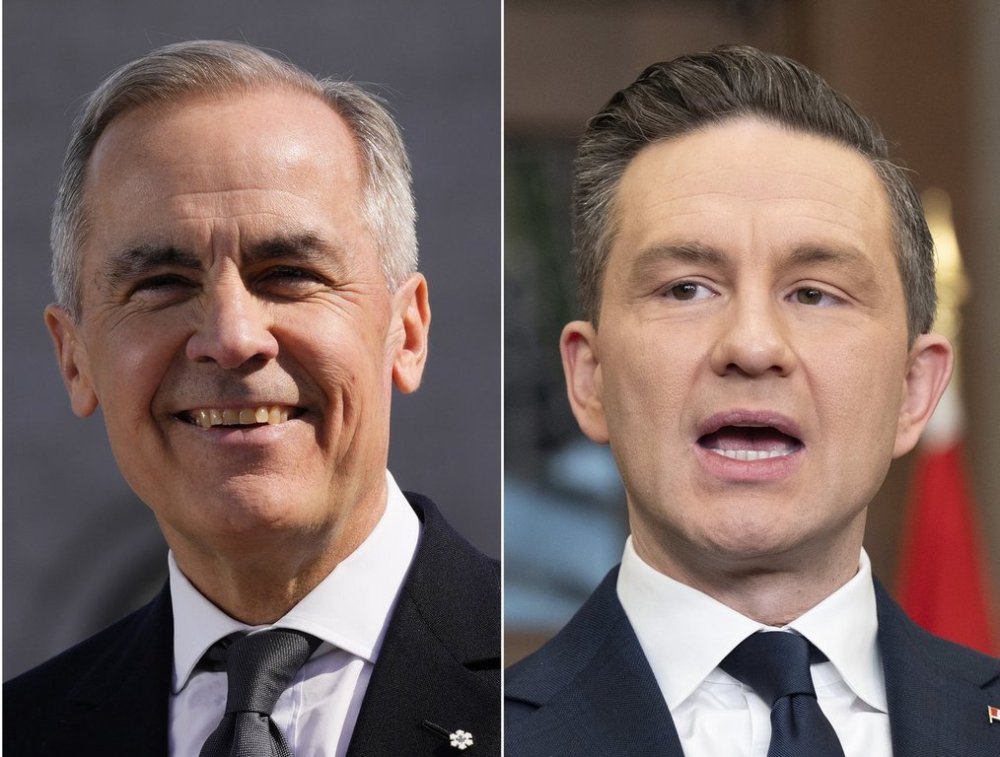Canada’s federal leaders are pitching big tax changes. How would they work?
Advertisement
Read this article for free:
or
Already have an account? Log in here »
To continue reading, please subscribe:
Monthly Digital Subscription
$0 for the first 4 weeks*
- Enjoy unlimited reading on winnipegfreepress.com
- Read the E-Edition, our digital replica newspaper
- Access News Break, our award-winning app
- Play interactive puzzles
*No charge for 4 weeks then price increases to the regular rate of $19.95 plus GST every four weeks. Offer available to new and qualified returning subscribers only. Cancel any time.
Monthly Digital Subscription
$4.99/week*
- Enjoy unlimited reading on winnipegfreepress.com
- Read the E-Edition, our digital replica newspaper
- Access News Break, our award-winning app
- Play interactive puzzles
*Billed as $19.95 plus GST every four weeks. Cancel any time.
To continue reading, please subscribe:
Add Free Press access to your Brandon Sun subscription for only an additional
$1 for the first 4 weeks*
*Your next subscription payment will increase by $1.00 and you will be charged $16.99 plus GST for four weeks. After four weeks, your payment will increase to $23.99 plus GST every four weeks.
Read unlimited articles for free today:
or
Already have an account? Log in here »
Hey there, time traveller!
This article was published 26/03/2025 (286 days ago), so information in it may no longer be current.
OTTAWA – The Liberal, NDP and Conservative parties have promised broad tax cuts and other reforms as they work to win over voters in the early days of the federal election campaign.
Here’s a closer look at how those proposals would operate — and who stands to benefit the most from them.
What are they promising?

The Liberals and Conservatives are both offering to reduce the lowest marginal tax rate in Canada, currently set at 15 per cent.
The Liberal proposal would reduce that rate to 14 per cent, while the Conservatives would take it to 12.75 per cent over three years.
Lisa Philipps, a professor of tax law and fiscal policy at the Osgoode Hall Law School at York University, said that these proposals would hit a “very wide swath of Canadians.”
That’s because of how marginal tax rates work in Canada.
All taxpayers — even those who will make $150,000 in 2025 — pay 15 per cent income tax on the first $57,375 they earn, and higher rates on the share of income they make above that.
The Conservative campaign estimated that a Canadian earning $57,000 in a year would save $900 under their proposal, or $1,800 for a dual-income household, while the Liberals said their plan would “save two-income families up to $825 a year.”
The NDP criticized the Liberal and Conservative tax proposals, claiming both plans would serve to benefit the richest taxpayers instead of struggling Canadians.
Instead, the plan put forward by NDP Leader Jagmeet Singh on Wednesday would increase the basic personal amount — the share of income free from tax — for those earning under $177,882 a year, and lower it for anyone earning more.
The party pitched the idea as a way to inject “more progressivity” into the federal tax system.
The NDP estimates that a Canadian earning between $19,500 and $177,882 would save $505 a year under this plan.
Who would benefit the most?
Philipps said that even a few hundred dollars in savings could be very meaningful to low-income families, even if they save comparatively less than higher earners under the Liberal and Conservative plans.
David Macdonald, senior economist at the Canadian Centre for Policy Alternatives, argued in an interview that Canada’s most vulnerable would scarcely see any benefit at all from the Liberal and Conservative proposals.
Canadians living below the poverty line would only receive $11 under the Liberal plan and $25 from the Conservatives, he estimated.
That’s because low-income earners already have access to a series of credits that substantially reduce their taxable income, which Macdonald said would make the proposed cuts to the bottom tax bracket negligible.
Macdonald said many tax benefits are also calculated based on the marginal rates and would also face reduction under the Liberal and Conservative proposals, limiting how much taxpayers get back through credits.
He said few Canadians will end up getting the maximum benefit cited by the Liberals and Conservatives — and roughly 200,000 taxpayers could be left worse off by the tax cuts because of the effect on their credits.
“Broadly speaking, two-thirds of filers would see some benefit and a third of filers would see no benefit. And the folks that would see no benefit are overwhelmingly lower-income Canadians,” he said.
How much would the tax cuts cost?
The Conservatives said their proposed tax cut would be fully implemented by fiscal year 2027-28. They project it would cost the government $7 billion in each of the first two years, and $14 billion a year after that.
The parliamentary budget officer projects on its website that the Liberal proposal would reduce federal tax revenue by $5.9 billion annually.

Liberal Leader Mark Carney, left, and Conservative Leader Pierre Poilievre are shown in this composite image. THE CANADIAN PRESS/Justin Tang, Adrian Wyld
Philipps said that if the Liberals and Conservatives wanted to offer more targeted and less costly relief for Canadians, they could have pitched income-tested credits aimed at low-earners.
But those proposals likely would be complicated and trickier to explain during an election campaign, she said.
“I’m sure that all these design options were considered,” she said. “And they’ve gone with a really straightforward, reduce-the-tax-rate.”
The NDP said increasing the basic personal amount in their plan would cost an estimated $10.4 billion, which they expect to pay for by cracking down on unpaid corporate taxes.
The party also promised to remove GST from essentials — a measure the NDP priced out at $4.5 billion — and to double the Canada disability benefit and boost the guaranteed income supplement at a cost of $3 billion to $4 billion.
Macdonald said there will have to be “trade-off” cuts to services if the federal government loses billions of dollars to a tax cut.
He said it will be up to the parties to explain how they plan to pay for their tax cuts in fully costed platforms later in the campaign.
Alex Laurin, vice-president and director of research at the C.D. Howe Institute, said that while the think-tank is in favour of personal income tax cuts, these Conservative and Liberal proposals are not what it had in mind.
Laurin said that unless the tax proposals come with associated spending cuts, they would be covered by government borrowing.
“It’s borrowing money to redistribute it to people with not many meaningful economic impacts,” he said.
Conservative Leader Pierre Poilievre has indicated the party plans to broadly slash bureaucracy and spending on consultants to pay for its proposals in the campaign.
Laurin said the C.D. Howe Institute would prefer to see cuts to the second income tax bracket, rather than the first, arguing it would promote better economic outcomes to offset losses in revenue.
People are encouraged to earn more money when the federal government cuts the rate on the second tax bracket, which covers incomes up to $114,750.
Structurally reducing Canada’s tax base as the country braces for the effects of a trade war with the United States would put the government in a weaker position while offering little meaningful relief to workers, Laurin argued.
“Do these promises actually strengthen the economy? Because that’s what we need at the moment,” he said.
“If we get into a crisis, I don’t think anyone will be arguing that this is the policy that the workers need.”
— with files from Sarah Ritchie
This report by The Canadian Press was first published March 26, 2025.


















